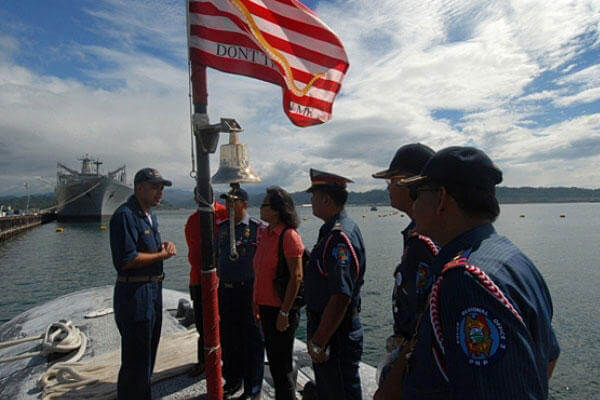The Pentagon will soon begin to rebuild its presence in the Philippines, but U.S. forces will likely be kept on a short leash.
It's been more than 20 years since the Philippine government ordered the U.S. to end its massive Air Force and Navy presence in 1991 as a result of deep-seated political tensions in the region.
For almost a century, America enjoyed a large strategic foothold in Southeast Asia, operating out of Naval Station Subic Bay and Clark Air Force Base.
"There was a swell of nationalism that sort of ushered the U.S. out the door," said Jennifer Keister, visiting research fellow at the Cato Institute. "I think we have been negotiating for some form of re-entry ever since."
That appears to have happened with the new 10-year agreement President Obama recently signed that will give the U.S. military greater access to Philippine bases.
But concerns about the U.S military's role in the Philippines have already led to clashes outside the U.S. Embassy in the capital of Manila between police and more than 100 left-wing activists who protested Obama's visit and the new security arrangement.
Details of the agreement are still unclear as both sides continue to be "very opaque about what this force presence would look like," Keister said.
"I think a lot of the strategic value of this, one way or another, is contingent on some of the parameters that they haven't specified -- the duration and the size of the force and what their operational parameters might be," she said.
Those details are being worked out "military to military," Rear Adm. John Kirby, the Pentagon's chief spokesman, told reporters April 29.
"We in the Department of Defense welcome and appreciate the work that was done to achieve this agreement ... and it does help us continue to pursue and realize the rebalance to the Asia Pacific region," he said.
"The Philippines is not only a treaty ally, but a long and good friend for the United States military. And we look forward to deepening that relationship going forward through the use of Philippine bases to help us pursue a rotational presence. This is not about U.S. bases on Philippine soil."
The U.S. has strengthened its ties in the country over the last decade by supporting the Philippine military's fight against Muslim terrorist groups in the south.
"The fact that they tossed us out of there 20 years ago and now that they basically want us back ... is a positive for the U.S.," said Joshua Kurlantzick, senior fellow and Southeast Asia expert at the Council on Foreign Relations.
In 2012, Chinese paramilitary ships took effective control of the disputed Scarborough Shoal, a rich fishing ground off the northwestern Philippines. And last year, Chinese coast guard ships surrounded another contested offshore South China Sea territory, the Second Thomas Shoal.
There is growing sentiment across the political landscape in the Philippines that is looking for U.S. military support against China, he said.
"They want President Obama to say ‘if this happens in the South China Sea, we will do this.' That is never going to happen, but for them this is a step toward that," Kurlantzick said.
"Even some of the people who were quite closely involved in the anti-American protests in the early 1990s ... are OK with the arrangement because they are more concerned about China than they are about the historical relationship with the U.S."
-- Matthew Cox can be reached at Matthew.Cox@monster.com.
-- Military.com's Richard Sisk and the Associated Press contributed to this report.































